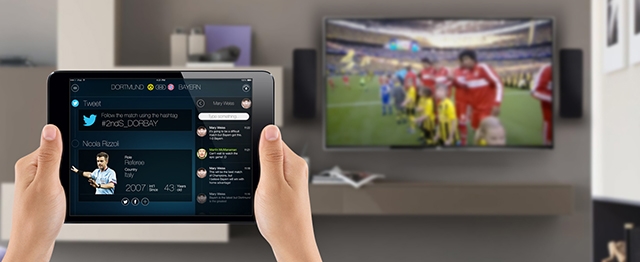Learn To Tap Cultural Moments As Second Screen Evolves
These days, brands looking to reach consumers during cultural moments, such as live broadcasts of major sporting events and awards shows, must be thinking beyond the big screen in the room if they want their media buys to move the needle.

People are most likely to second-screen during live TV event viewing, as these types of events lend themselves not only to commercial breaks, but also to shared experiences with friends and family watching the same content from another location.
This doesn’t mean viewers are neglecting what’s happening on the big screen, however. In fact, much research suggests that second-screen use actually enhances engagement, particularly for sports programming.
Football season is a great time for marketers to use the relationship between second screens and cultural moments to connect with consumers in a meaningful way. The insights and ideas below, while focused specifically on the upcoming sports season, are widely applicable to other cultural TV moments, from awards shows to elections.
The Mobile Activities That Matter
Overall, second-screen behavior is on the rise. Last year, an estimated 177.7 million U.S. adults (that’s more than 70% of the population) regularly used another digital device while watching TV, according to eMarketer. That figure was up 5.1% over 2016 second-screening.
We’re also seeing a shift in the types of devices used as second screens — from laptops and computers (in 2015) to mobile phones. By next year, 187.3 million of the expected 193.5 million second-screeners will be doing so on their smartphones.
The types of content accessed on second screens while watching sports on TV gives marketers a useful window into their best engagement opportunities. In the U.S. in 2017, second-screen activity among sports viewers broke down as follows, according to Statista:
— 63% used social networks
— 54% chatted with friends
— 51% read emails
— 40% read the news
— 40% played games
— 32% searched for information related to what they were watching
— 31% searched for products to buy
— 20% shared opinions of a TV show
— 19% interacted with the online content of the show
The above activities support the notion that cultural moments like sporting events provide a prime opportunity for viewers to connect with their broader social networks around a shared activity. They also represent a prime opportunity for brands to deliver value during these shared moments.
For example:
— A pizza brand extending an offer for free delivery through the end of the game to consumers checking their standing in a fantasy football app.
— A big-box retail brand offering an online purchase discount on team-themed merchandise after someone posts a comment on the most recent touchdown via their favorite social platform.
— An alcohol brand rewarding people with free rideshare credits to get home safely from a viewing party.
— An entertainment brand sharing a sneak peek of an upcoming action film after a user unlocks a new level in a mobile game.
Unlike TV ads, where awareness is the name of the game, second-screen promotions represent a prime opportunity to drive engagement and action. Your brand needs to be prepared to be a part of the moment, not detract from it.
(53)